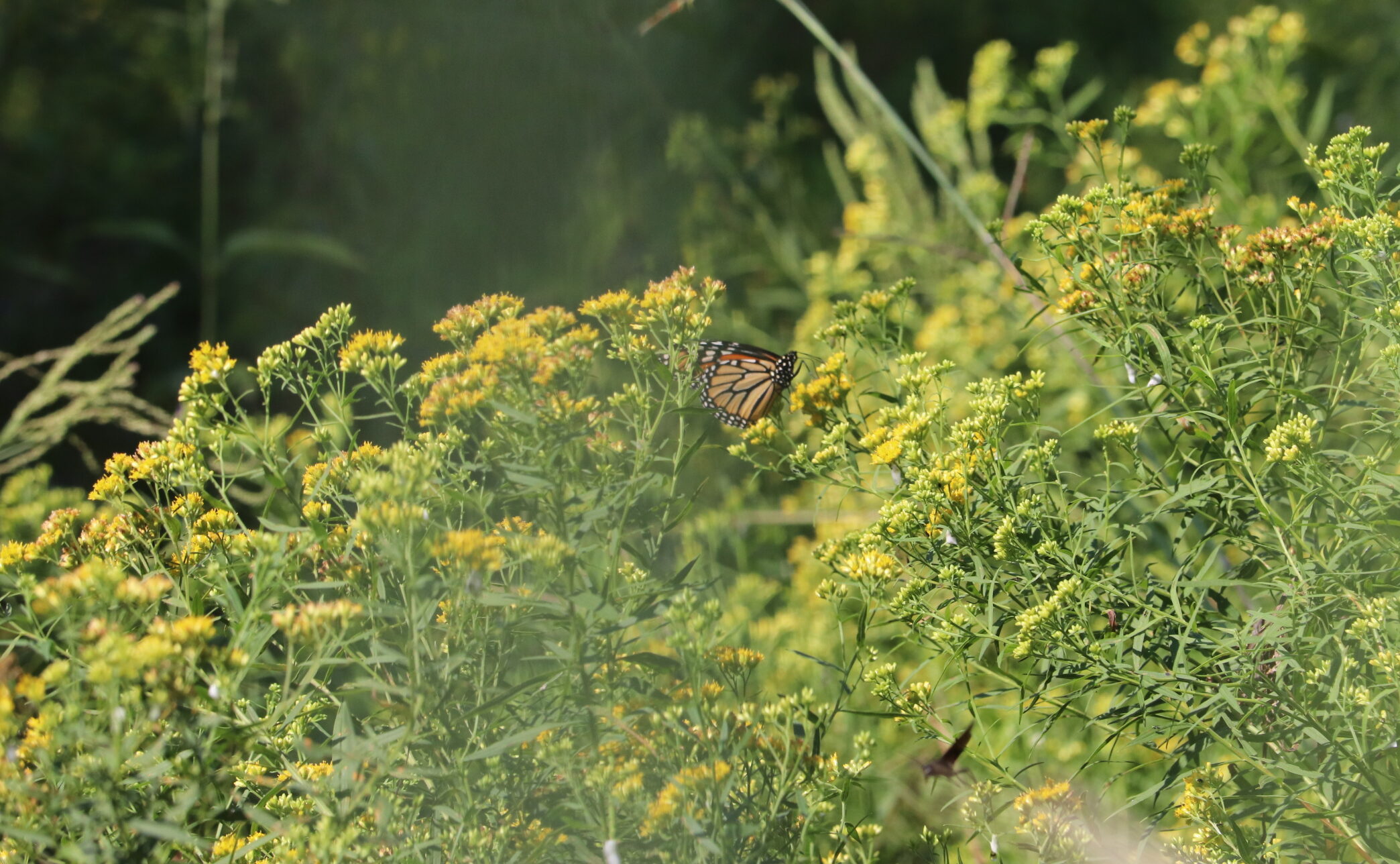Stormwater management in a homeowner’s association 1-acre detention basin gets a retrofit and is a wildflower powerhouse…
A Look at What’s Blooming: Late Summer
The cicadas are still hanging on, and the ever changing summer clouds provide the dynamic backdrop to a detention basin that is living and breathing. While in the height of summer it may appear to be sea of green, up close it is actually rather dynamic.
But it didn’t always look so alive. Several years ago, it looked like many other storm-water laden drainage pools in residential areas. Chocolate brown water trying to find a place to drain. It’s a meadow now and biodiversity mecca at the same time. You can read about that story here and how we got the township and HOA approvals to make the detention basin retrofit into a wildflower meadow.

Today, there’s no standing water. No compacted soil. No open fields of turf grass for geese to hang around on.
It’s a retrofitted detention basin that is as green literally as it is figuratively. How? Because it is a wildflower meadow. It’s a retrofit. A naturalized detention basin. It’s alive.
Many times I look out our windows and see the meadow just being. Yet, upon closer inspection, I am always amazed at how alive the meadow is. While watching the meadow one summer morning with my coffee, I jotted down this poem:
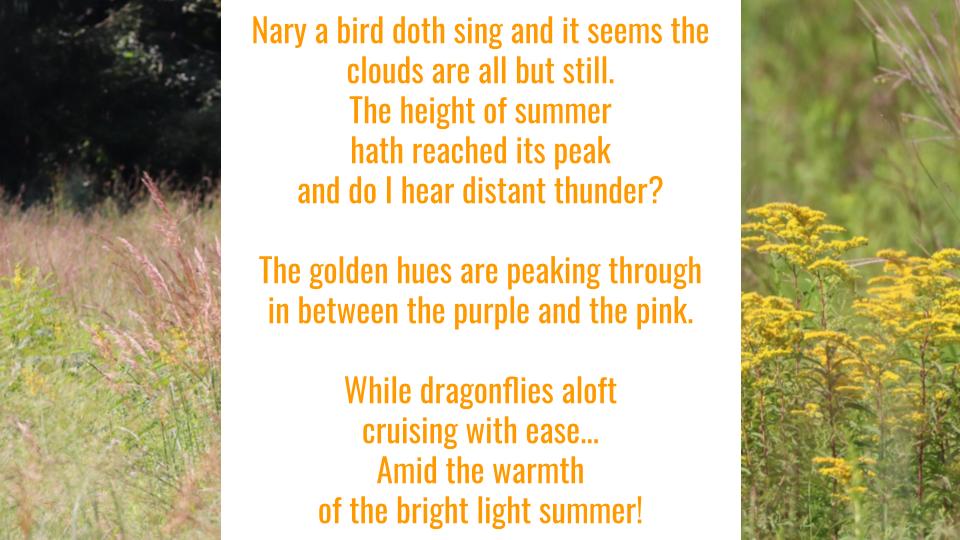
This meadow puts on quite a wildflower show! Here are few from mid August.


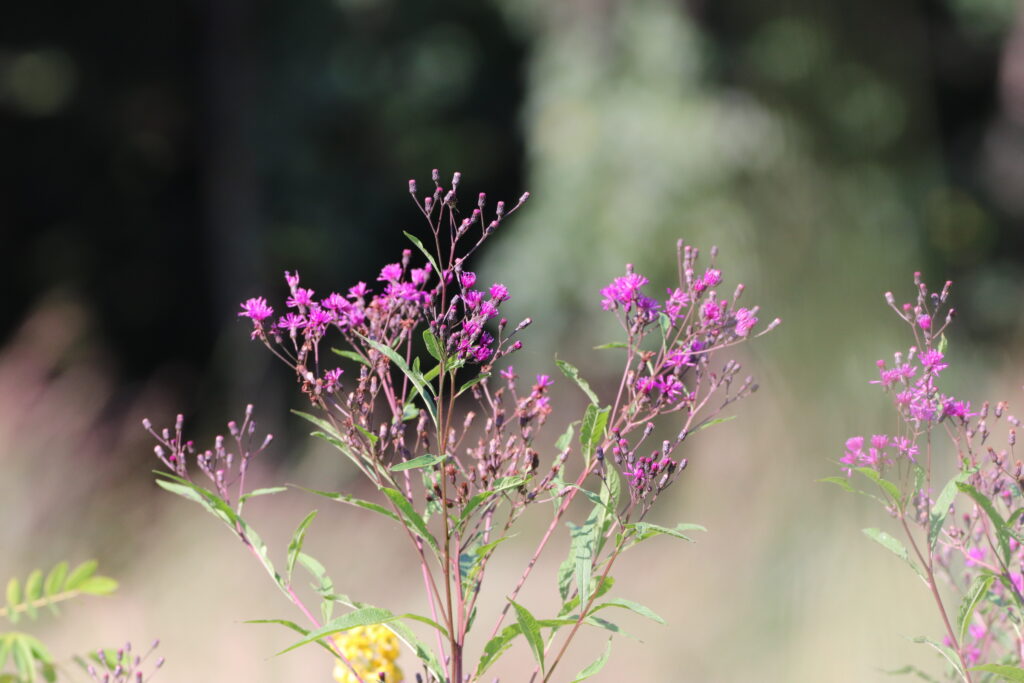
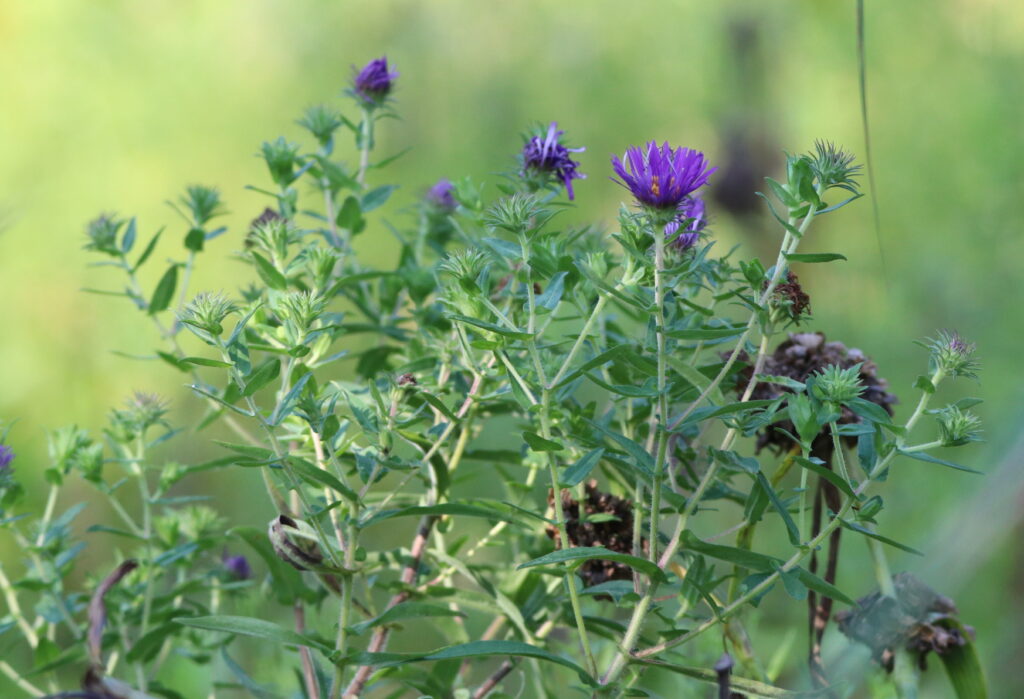
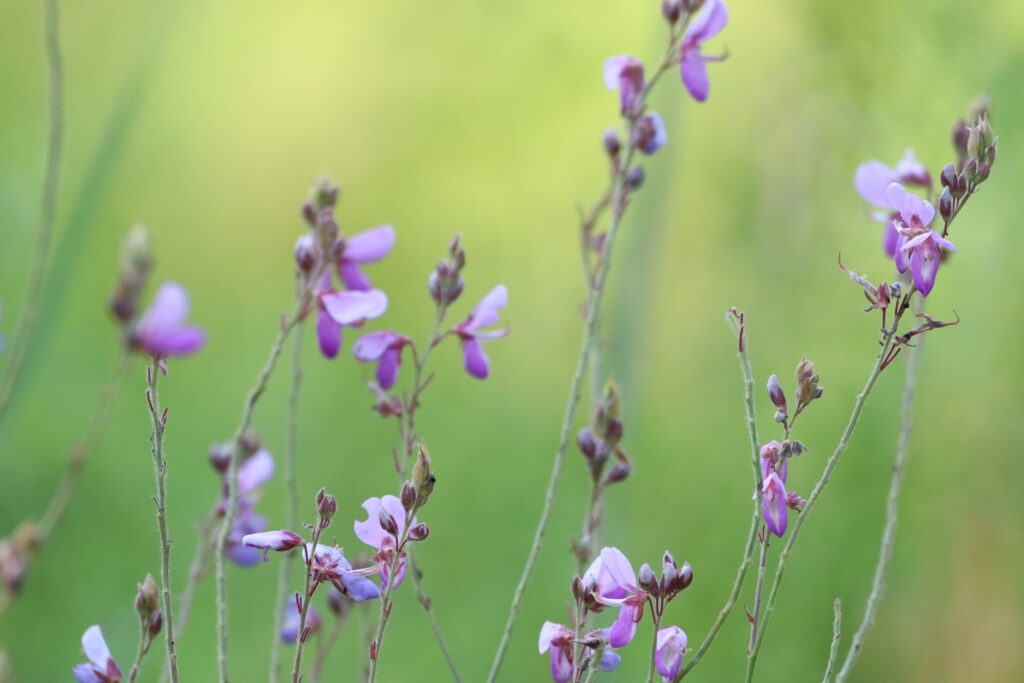
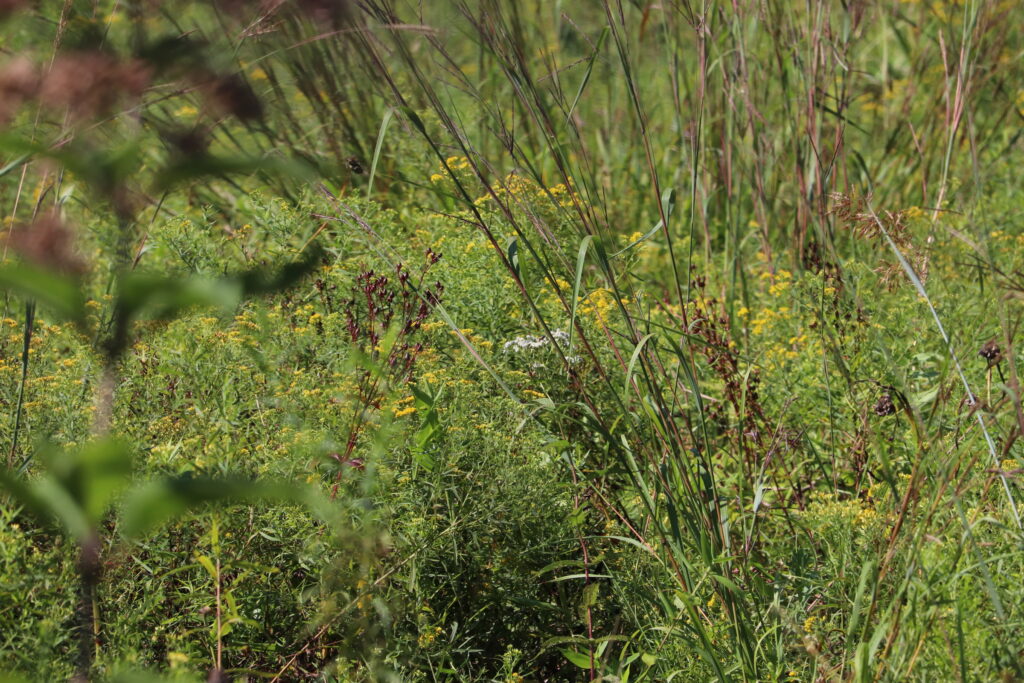
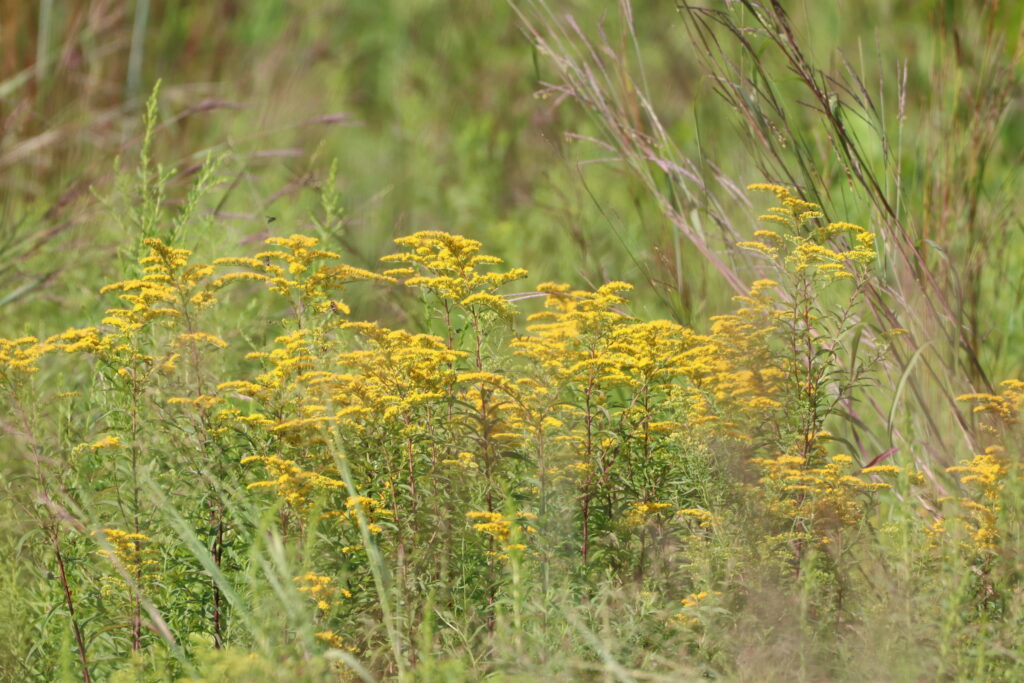
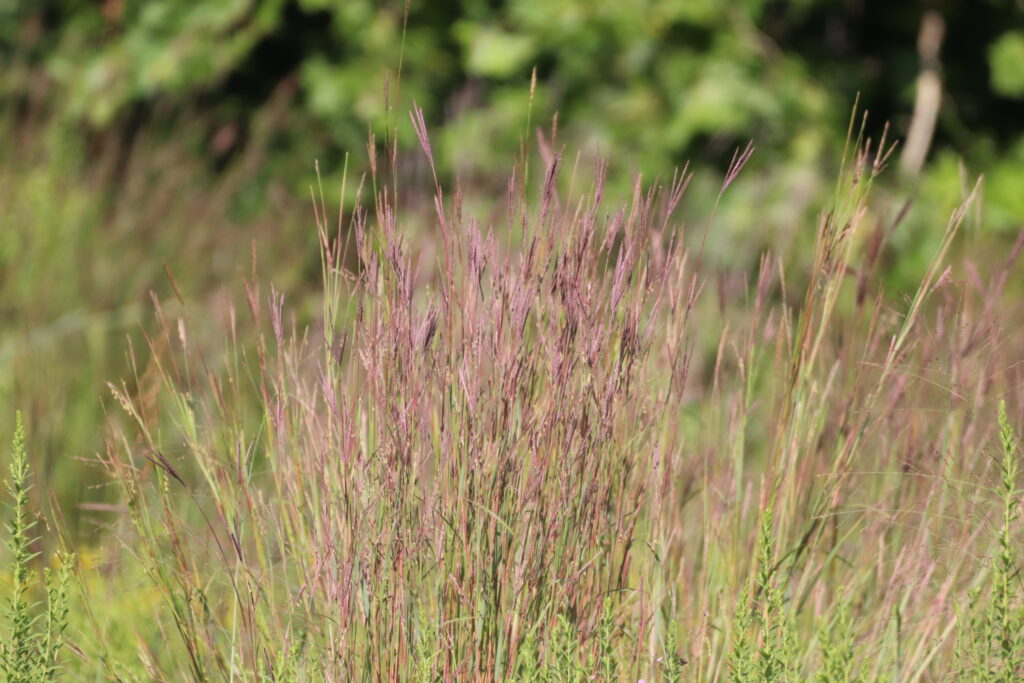
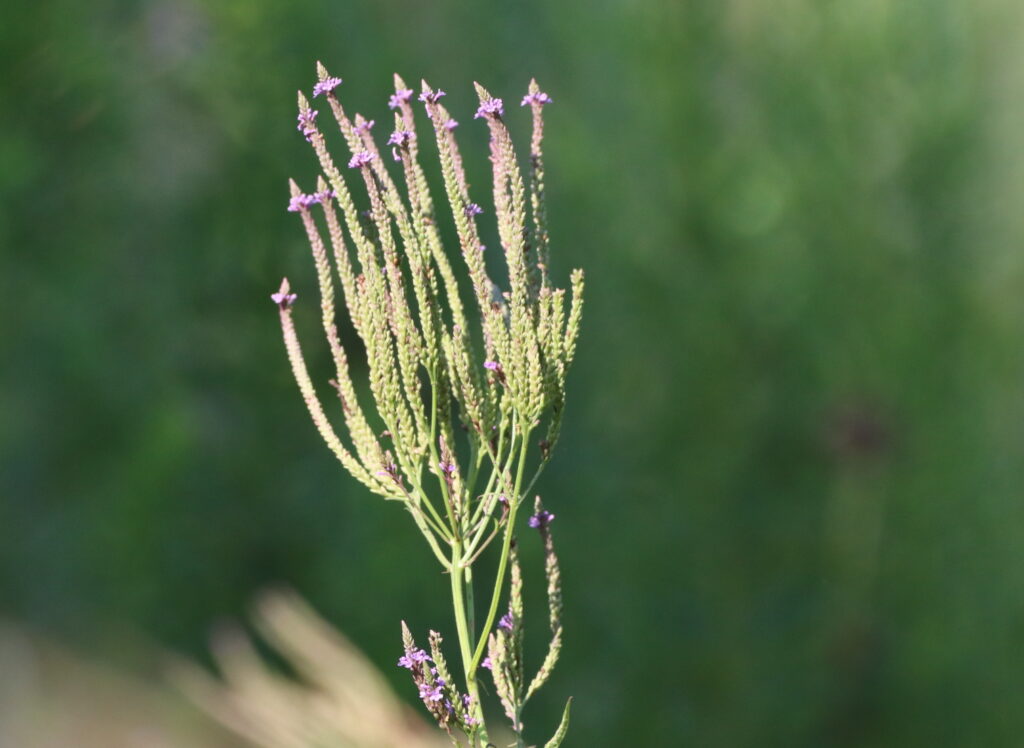

About six years ago received approval from our homeowner’s association and our township to retrofit the detention basin behind our home into a wildflower meadow. It had the classic gray concrete channels running lengthwise into a great gray riser. It was dismal to say the least. The “detention” basin is designed to hold stormwater for a short period of time. (While its stormwater infrastructure cousin “retention” basin holds a permanent pool of water.) Depending on the severity of the rainwater, ours would typically drain away in a matter of a few hours up to a whole day.
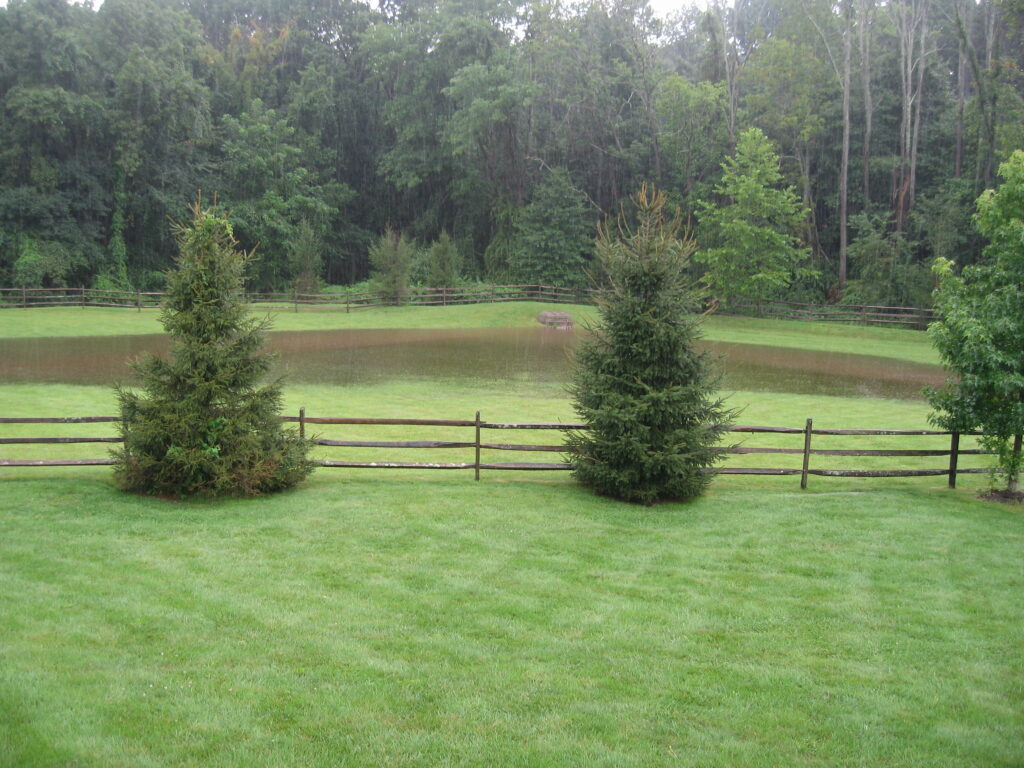
In the photo above, see the gray riser in the center of the photo just above the water line? This was after a heavy summer rainstorm about 12 years ago. Our basin never looks filled with chocolate water anymore!
The trees have certainly grown in since then…here are the same three trees:

The grasses and wildflowers and one rogue Sycamore tree (see below) do an amazing job of soaking up and infiltrating the rain water. This picture below is the looking in the opposite direction, but you can see the same pines and sweet gum on the left side in the now rear of the photo. (Before they were in the foreground).
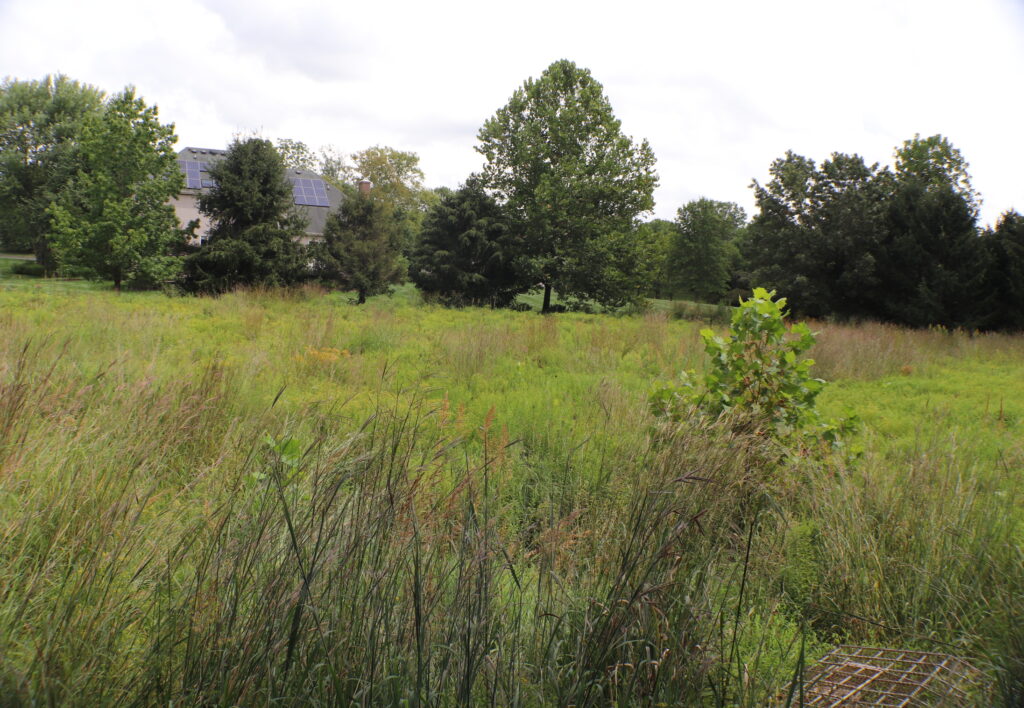
Come late fall and into winter, the living meadow continues to be alive…with insects overwintering and birds foraging.
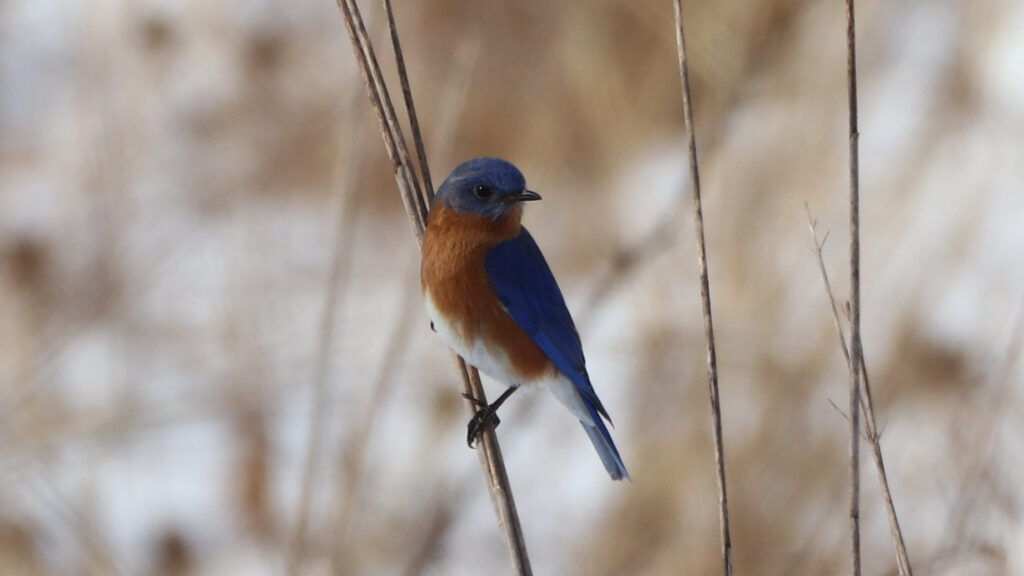
Then, after most of the snow is gone, it gets mowed but once, leaving small habitat islands, so the whole cycle of more wildflowers begins again.

Emily Dickinson wrote:
I’ll tell you how the Sun rose –
A Ribbon at a time –
The same could be said for the 1 acre meadow behind my home.
I’ll tell you how the Meadow lives –
A Flower at a time –
The wildflower meadow functions on so many levels when it comes to stormwater management and biodiversity. Two elements that have been driven apart by pavement and impermeable surfaces thanks to increasing population and transportation needs. But they don’t have to be. There is a way to mitigate chocolate colored pools of standing water.
We just need to dig a little deeper and change the mindset of diamond shaped lines of turf grass in drainage areas to a blooming goldmine that adds aesthetic value to public spaces and common drainage areas. Every now and again I see signs posted highlighting a restoration project or a pollinator habitat in common areas, and even some golf courses. In fast, just this past spring, I saw a Monarch fly by me on a golf course. I was thrilled. There was something there for that butterfly. But last time I checked, turf grass doesn’t bloom.

